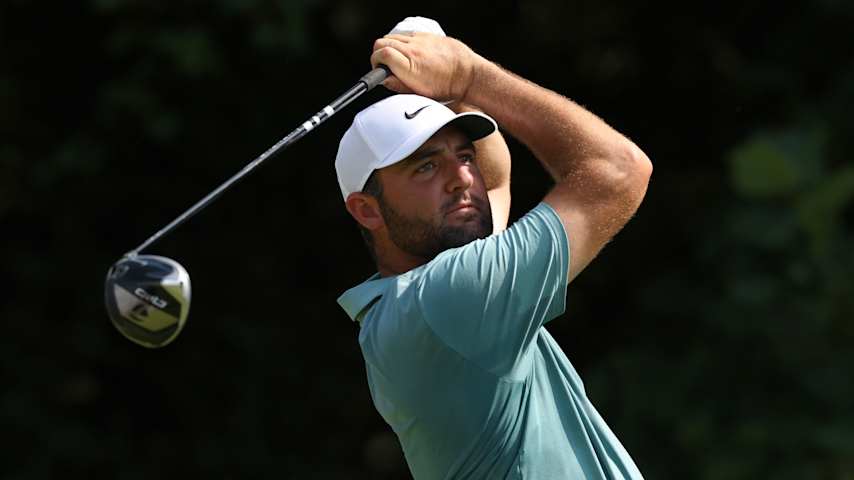Power Rankings: See rankings for FedExCup top 30 at TOUR Championship

Scottie Scheffler heads to the 2025 TOUR Championship ranked first in the FedExCup. (Andy Lyons/Getty Images)
Escrito por Rob Bolton
The TOUR Championship is the same as it ever was.
If you’re willing to turn back the clock to 2006, then it is. That’s the last time it was contested as a straightforward, stroke-play competition with no positional influence to determine the winner, and it will again this week. The modern twist is that the lowest score at the conclusion of 72 holes (and then a playoff if needed) will be crowned the 19th FedExCup champion as well.
A field of 30 has qualified for the Playoffs finale at East Lake Golf Club in Atlanta. How they got here for this potentially once-in-a-lifetime opportunity, how East Lake has also dipped back into its recent history, and much more is laid out beneath the full-field ranking below.
Talking heads no longer are required to explain how the leaderboard at the TOUR Championship is calculated. After six years (2019-2024), Starting Strokes has been eliminated, so may the lowest man win. Because he will. From 2007 through 2018, FedExCup points were on the table at the TOUR Championship, but that component also remains in the past. As a result, advancing to the TOUR Championship now is akin to a reset for a winner-take-all “Game 7.”
In addition to posing with the FedExCup trophy, the champion will be credited with an official PGA TOUR victory. That’s always been the case regardless of the format in the Playoffs, but now the prize money is official, and that’s a big, big, big deal. Whoever conquers all at East Lake will bank $10 million of the prize fund of $40 million, with all of it contributing to his official earnings. Waking up the following day to see an eight-figure deposit in the bank no doubt will be gratifying, but so, too, is the promise of PGA TOUR status as a FedExCup champ through 2030. That’s one of the perks of hoisting the hardware.
For merely advancing to the TOUR Championship, all 30 entrants are equipped with membership through 2027 (where necessary) and exemptions into the 2026 editions of the Masters, the U.S. Open and The Open Championship (as long as traditional criteria are honored). Job security and the bonuses allow the guys to give East Lake their best without the usual pressures, but successful execution fueled by competition is what got them here, so this isn’t the time to let off the gas. Still, they’re advised to review the road map because there are a couple of significant changes from last year’s debut of architect Andrew Green’s reveal of the restoration.
After one edition as a par 71, East Lake has returned to its familiar par of 70 with four par 3s and two par 5s. This is because the 14th hole once again is a par 4. As a 580-yard par 5 last year, it averaged 4.333, 15th-easiest of 900 holes played all season. This year, it tips at 530 yards, which is 10 yards longer than its max in 2023. Overall, the yardage of East Lake is 7,440.
What’s wild is how East Lake was easier in the aggregate despite its one-off par of 71. After a scoring average of 68.76 in 2023, it checked up a smidge lower at 68.62 a year ago. Was it a psychological advantage that it was more difficult to make bogey or worse at No. 14 – three by the entire field in 2024, compared to 31 in 2023? Perhaps, but golfers who summon previous experience on what is now again a stingy par 4 will be able to do so free of the influence of the staggered start.
Not surprisingly, the most challenging aspect of the restoration of East Lake a year ago was the reception of the new TifEagle bermudagrass greens, even though they were 11 percent larger. Greens in regulation was down by only a percentage point, so the field still averaged approximately 12 per round, but proximity to the hole increased by nearly 6 feet. At 39 feet, 7 inches, it’s the longest distance of the six editions that used Starting Strokes, and by almost 4 feet over the next-longest.
With a full year for the putting surfaces to have matured, most, if not all, splits on approach will improve, but the primary rough is up half an inch to 3 1/2 inches, so the premium of finding the shortest grass off the tee has increased. And that says nothing of the new trees that have been added beside seven fairways and the narrowed landing area off the tee at the par-4 17th hole. Greens once again are prepped to touch 13 1/2 feet using the Stimpmeter.
As she so often does in Atlanta in August, Mother Nature likely will play a bit role. There is a decent chance of rain and the potential for boomers during at least the first three rounds, but the threat could linger into Sunday’s scheduled conclusion. With the entire field going out in twosomes midday every day, impact isn’t likely to favor or penalize anyone. After a daytime high of 90 degrees on Thursday, winds, albeit light, are forecast to curl in from an easterly direction (opposite prevailing). That will cool the air and drop the highs into the mid-80s the rest of the way.
ROB BOLTON’S SCHEDULE
PGATOUR.com’s Rob Bolton previews and recaps every tournament. Refer to the timing of his contributions below. He’s also active as @RobBoltonGolf on X where you can connect with him.
- MONDAY: Power Rankings
- TUESDAY*: Fantasy Insider
- SUNDAY: Points and Payouts
- MONDAY (Aug. 25): Qualifiers
*Rob is a member of the panel for PGATOUR.COM’s Expert Picks for PGA TOUR Fantasy Golf presented by PGA TOUR Superstore, which also publishes on Tuesday.






